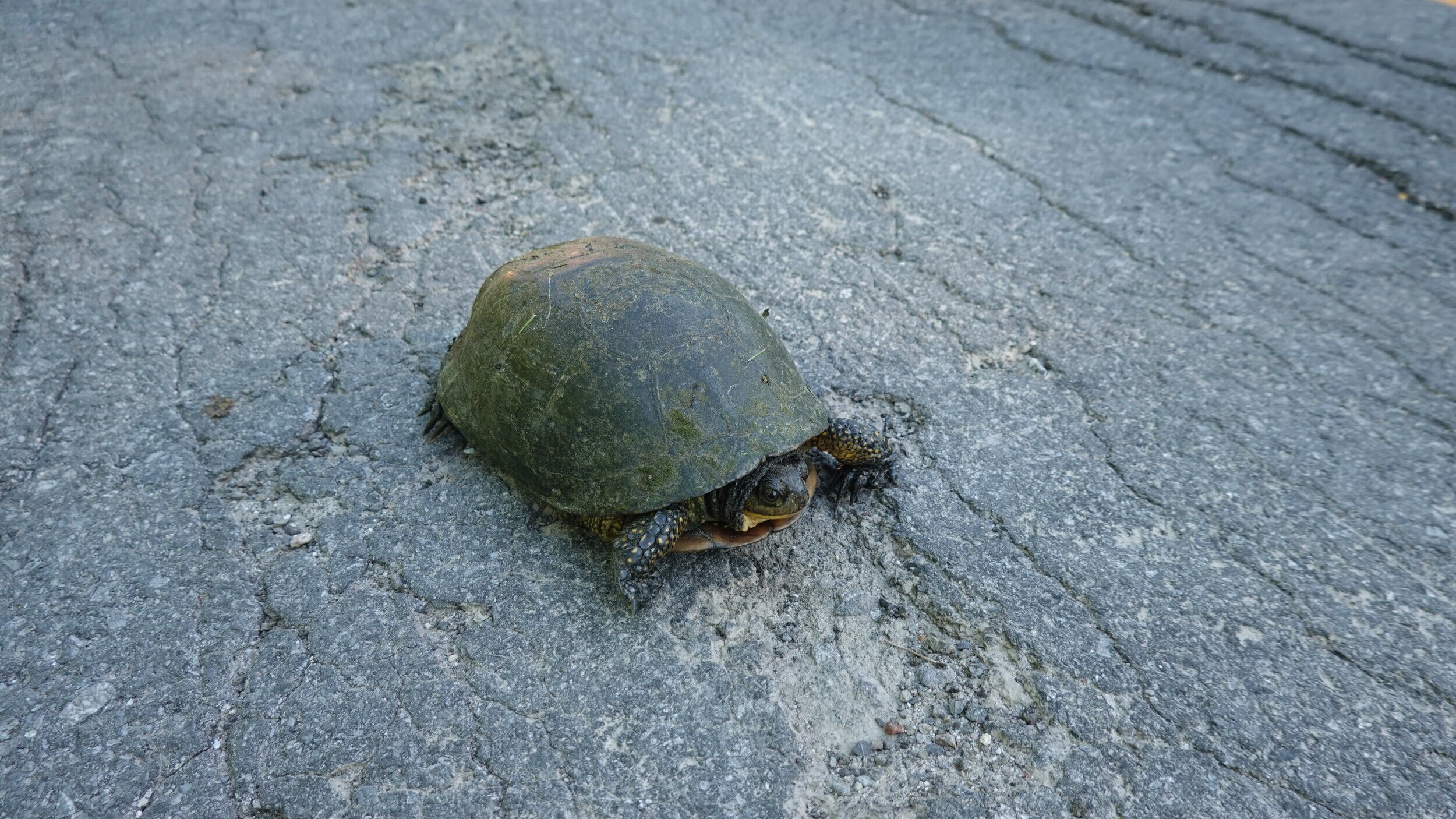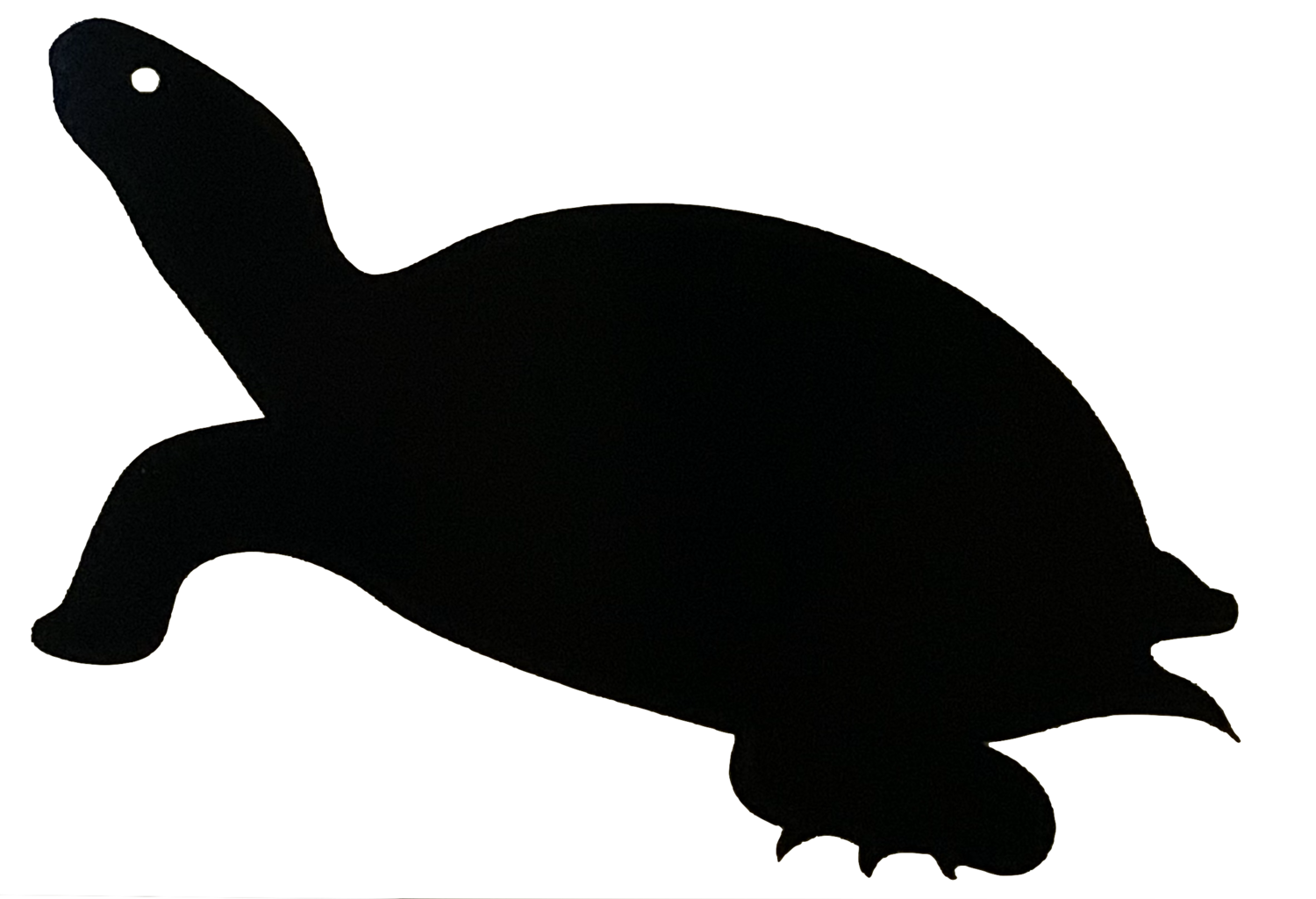Turtle Trauma Response Program

About the Program
The turtle trauma response program was created to help injured turtles in Kingston and the surrounding area. Through this program, the public are encouraged to bring injured and dead turtles they find to one of the temporary holding stations within Kingston.
Giving 10 minutes of your time to transport a turtle could save its life!
Saving adult turtles is key to the survival of Ontario turtle species, since it is estimated to take upwards of 59 years for a single adult snapping turtle to replace itself!
Our Trauma Program Coordinator can be contacted directly at trauma.turtleskingston@gmail.com if you have any questions.
What you must know to help a turtle!
When helping any turtle you MUST record the exact location where you found it (cross roads, nearest water body, house address, etc) otherwise the turtle cannot be rehabilitated and must be EUTHANIZED (required by law).
What to do if you find an injured or dead turtle!
1. Find an injured turtle
2. Place the turtle in your vehicle
3. Record the exact location
4. Drive without music
~
1. Find an injured turtle 2. Place the turtle in your vehicle 3. Record the exact location 4. Drive without music ~
If you find an injured or dead turtle on the side of the road, we encourage you to take it to one of the temporary holding stations within Kingston.
If you are near Napanee or Peterborough, you could directly transport the injured/dead turtle to Sandy Pines Wildlife Centre or the Ontario Turtle Conservation Centre.
****** IMPORTANT******
When you bring an injured turtle to a temporary holding station you will be required to provide your personal contact information. This is required by law for Sandy Pines Wildlife Centre to have for contact tracing purposes, should the turtle be carrying any viruses or bacteria. It is also important should they need more information about the turtle.
You may choose whether to be contacted to release the turtle should it be successfully rehabilitated!
When helping turtles, we recommend you learn how to move turtles and also have a turtle road warrior kit in your car. Never attempt to care for an injured turtle yourself. It is ILLEGAL to keep or rehabilitate wildlife if you are not a licensed wildlife rehabilitator! Injured turtles require the experience and expertise of a trained rehabilitator.
Check to make sure the turtle is recently injured
Many turtles have old injures. Check for fresh blood on their head, legs or near by (aka the road), look at their carapace and plastron (top and bottom shell) for cracks. When unsure, best to bring the turtle to receive help.
Don’t assume a turtle is dead
Turtles can reduce their metabolism and breath so low they appear dead. Unless the turtle is stinky or dried out assume they are alive and bring to get help.
prepare the turtle for transport
Carefully move the turtle into an dry opaque well-ventilated container with a towel on the bottom and a secure lid (turtles can climb). Do not offer the turtle any food or water. Place the container in your vehicle in a secure location such as on the floor or buckled into the back seat with the passenger seat pushed all the way back to anchor the container.
Record location information
Make sure you record the exact location you found the turtle - cross roads, nearest water body, house number etc. This information is required to release the turtle otherwise it may need to be euthanized.
transport the turtle
While driving do not play loud music, speak softly, and drive cautiously. Avoid sharp turns so the turtle does not slide around unnecessarily. Temporary holding stations for turtles can be found on our website using the QR code.
hatchlings and eggs
If you find hatchlings after October you can bring them to a wildlife rehabilitation centre to spend the winter. If you find unearthed eggs they must be immediately transported to a wildlife rehabilitation centre for incubation. Place eggs in slightly damp soil collected from where you found them, be sure to NEVER turn or rotate eggs. NEVER dig up a turtle nest as it is illegal and you could kill the hatchlings. If you find a nest in a hazardous location please contact us at turtleskingston@gmail.com.
This midland painted turtle was rehabilitated by Sandy Pines Wildlife Centre. You can see where the turtle’s injuries have healed on their neck and carapace (shell)
What if you find a turtle on the highway?
The recommendation by the Ontario Provincial Police Department is for motorists who spot a turtle on a busy four lane highway like the 401 to:
Pull over only when it is safe to do so
Engage your emergency 4-way flashers
Remain in your vehicle
Call the OPP non-emergency telephone number 1-888-310-1122
Make note of your location to provide to the operator
Do not exit your vehicle. Wait for the responding officer to arrive
If the turtle is injured or dead, consider transporting it yourself to Sandy Pines Wildlife Centre or the Ontario Turtle Conservation Centre for trauma treatment, egg extraction, or euthanasia.
Transporting Injured turtles
If you are transporting an injured turtle, please follow these steps:
Place it in well-ventilated plastic container with a secure lid (turtles can climb)
Note the location (road, major intersections, and mileage) so the turtle can be returned
Do not offer the turtle any food
Do not transport the turtle in water
Wash your hands after handling any turtle
It is not recommended, but if you must keep it overnight, place it in a well-ventilated container in a quiet, cool, dark place with no water and away from pets and people.
Why transport dead turtles?
When injured, a turtle’s metabolism can slow to the point that they appear dead but are still very much alive. Their slow metabolic rate combined with their amazing regenerative and healing abilities is what allows turtles to survive significant injuries that would be fatal in mammals and birds. These turtles require an experienced rehabilitator to determine if they are indeed dead, in need of euthanasia, or if they can be rehabilitated. Even if the turtle itself is dead, they may be a gravid female, in which case eggs can be extracted and incubated if rescued within 24 hours.
NOTE: if the turtle smells it is likely been dead for too long for any eggs to successfully be rescued. Eggs must be extracted within 24 hours of their mother dying.
A turtle you find may look so fractured and broken that it cannot be helped. Even in these situations, take it to a temporary holding station where turtle experts can make the call - you’d be surprised what can be done to help heal a turtle!
Check out this short 15 min documentary about the Ontario Turtle Conservation Centre, which uses zip ties and crazy glue to fix turtles!
What happens after you drop off a turtle?
When a turtle is brought into one of the temporary holding stations, it is placed in a plastic bin lined with a soft padding. The temporary holding station then contacts Turtles Kingston to request a volunteer transport driver, who then transports the turtle to Sandy Pines Wildlife Centre in Napanee for trauma treatment or egg extraction and euthanasia if necessary.
Turtles that Sandy Pines Wildlife Centre are not able to treat are transferred to the Ontario Turtle Conservation Centre in Peterborough.
Want to be a volunteer driver? Sign up below.
Volunteer Drivers
Our Turtle Trauma Response Program relies on volunteer drivers to take turtles from participating vets to Sandy Pines Wildlife Centre in Napanee.
Each year (between March 1 and May 1) we recruit volunteer drivers for this program. You can sign up at anytime of the year to be added to our list of interested people, but we will only reach out to recruit volunteers in March and April.
What to expect as a volunteer driver?
Between May and October all Volunteer Drivers can expect to get occasional text messages informing them there is an injured turtle in need of transportation. Volunteer drivers available to transport the turtle to Sandy Pines Wild Life Centre in Napanee respond to the text message and the selected volunteer receives information about the pick-up location. Once a volunteer has been selected to drive the turtle, all volunteer drivers will receive a second text message indicating that a ride has been found.
The frequency of Turtles Kingston requests for volunteer drivers will depend on the number of turtles that are brought to the temporary holding stations (participating vets) by the public. We have no control over when or where these turtles will be brought in and ask that volunteer drivers have patience and flexibility with this program.




